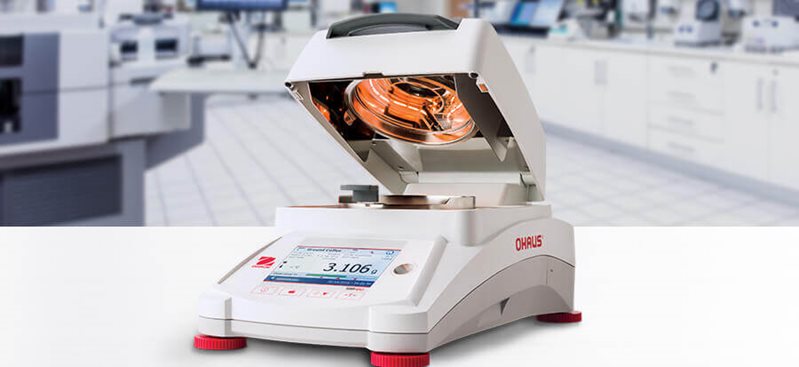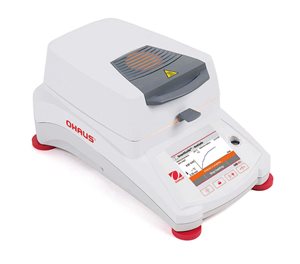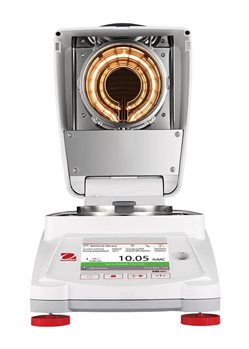
Introduction

Moisture analyzers are ubiquitous in both laboratory and industrial settings. As unwanted moisture can sully samples and adversely affect processes and products, these instruments are relied upon by scientists, product developers, and warehouse managers for sample analysis, materials inspection, quality assurance and quality control.
Moisture analyzers are microprocessor-controlled electronic analytical instruments that employ a heating system and a balance in a single unit. They have many advantages over other techniques; most notably, they have very short measurement times, and are easy to use for routine testing. However, there is one challenging aspect of using an electronic moisture analyzer, and that is the initial setup and method development.
Method Development - A Critical Yet Challenging Task
Defining an optimally effe

ctive method and adhering to it ensures accuracy and repeatable results, however method development may require a great deal of time and experimentation. A method for moisture content determination using an electronic
moisture analyzer should encompass sample selection, handling, preparation, and measurement. On the device itself, a method includes the determined drying temperature, initial sample weight, end point determination (auto shutoff or timed), and a heating program (standard, ramp, step, etc.)
The drying temperature, that is the target temperature inside the device at which the sample is dried, is typically the most critical parameter to define for a given sample. If the target temperature is set too low, it is possible that not enough energy will be transferred to the sample, thereby leaving chemically bound moisture behind which can lead to an inaccurate or variable result. If the target temperature is too high, it is possible to burn the sample or decompose components that should be considered part of the solid content of the sample. Choosing the proper drying method, particularly the appropriate drying temperature, can be a daunting task, especially for a new user.
Faster, Smarter, More Efficient Moisture Analysis With SmartGuide
There’s a better way. Using OHAUS' flagship
MB120 Moisture Analyzer with the proprietary
SmartGuide feature allow you to get started quickly by automatically analyzing a sample and accessing or developing an optimal heating method.
SmartGuide™ automatically evaluates a sample by modulating the temperature and observing how the sample reacts, or changes in weigh as the temperature varies. Using a proprietary algorithm it will analyze the collected data, suggest an initial target temperature, and create a method automatically.
Removing the guesswork from set-up and method development allows you to analyze more samples, access saved data, and spend less time prepping and more time putting your results to work.
The innovative
SmartGuide™ feature is simply accessed through the MB120’s touchscreen. With intuitive instruction, you can access 100 different saved methods or create a new one from scratch by following easy step-by-step prompts to select the optimal settings – heating temperature, heating time, start weight, stop criterion, and reference moisture value. And once you create the optimal method, you can not only get started on your analysis, but you can save it in the data library for future use.
SmartGuide will help you define how your sample will be heated by analyzing weights during temperature cycling. The
MB120 feature can even guide you through more complex moisture analysis with advanced method parameters like configurable shut off criteria and various heating profiles.
There’s a smarter, more efficient way to handle moisture analysis.
For more information, contact your regional OHAUS representative.